How to Create A Follow-Up Email Strategy That Gets Responses (With Templates & Best Practices)
No matter how killer your original email to potential customers, sealing the deal is unlikely after that single email. How unlikely? A meager 2% of sales are closed after the initial contact.
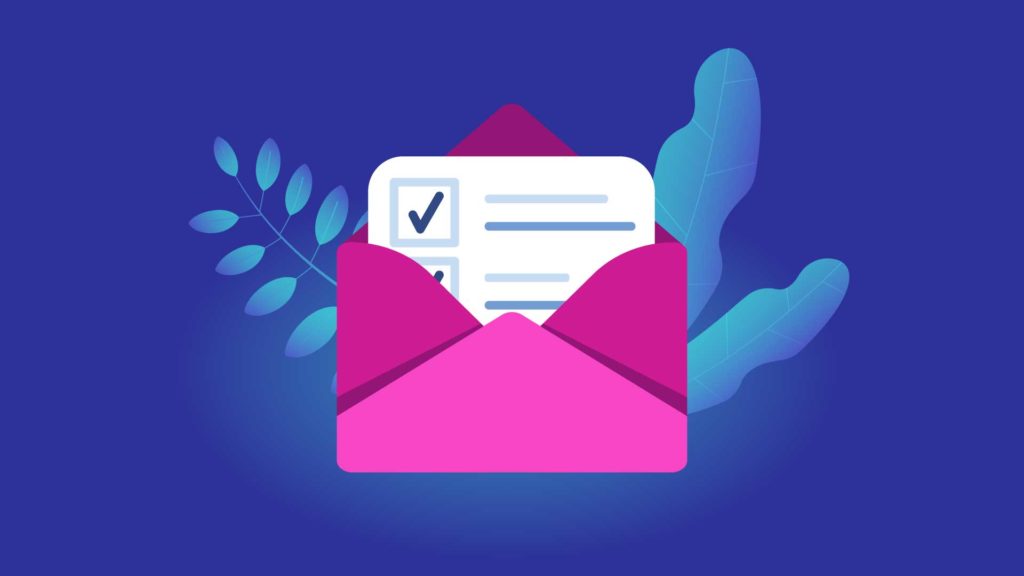
I know, yikes! But what gets measured gets managed. If you don’t know how to write the perfect follow-up email, do give this a read.
Now that we’re aware of how rare the sales equivalent to a hole-in-one is, we can take the steps we need to create a follow-up email strategy that gets responses.
Do Follow-Up Emails Work?
Yes, yes, they do. A study found the 4th follow-up had a response rate of 14%, and the 6th, a rate of 1%. Even the 10th in an email sequence, a point that most sales reps have already long given up, saw a 7% response rate. So, are follow-up emails that important? Definitely.
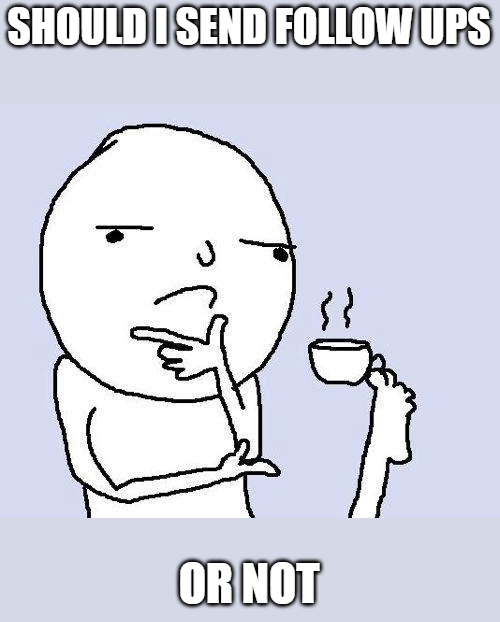
When Should You Consider Sending Follow-Up Emails?
Do you still work for the same company you did when you sent the initial email? If your answer is “Yes,” then the answer to our question is “Always!”
The purpose of your cold email doesn’t matter. Follow-up emails are a mandatory part of your strategy, whether the purpose of your emails are for sales, link building, guest posting, content promotion, collaboration, podcasting, or anything else that involves potential dollar signs. A huge chunk of marketers do tons of mistakes in follow up emails. A lot of the responses come only after sending a bunch of follow up emails. Which is why Marketers need to understand the importance of follow up emails.
People don’t always respond to your first email, so if you give up after email 1, you could be missing out on opportunities.
How to Send a Follow-Up Email
There is an art to sending follow-up emails, a strategy. But using a cold emailing tool like Postaga allows you to automate much of the outreach process not only to increase your conversion rate but to take some of the workloads off of sales professionals.
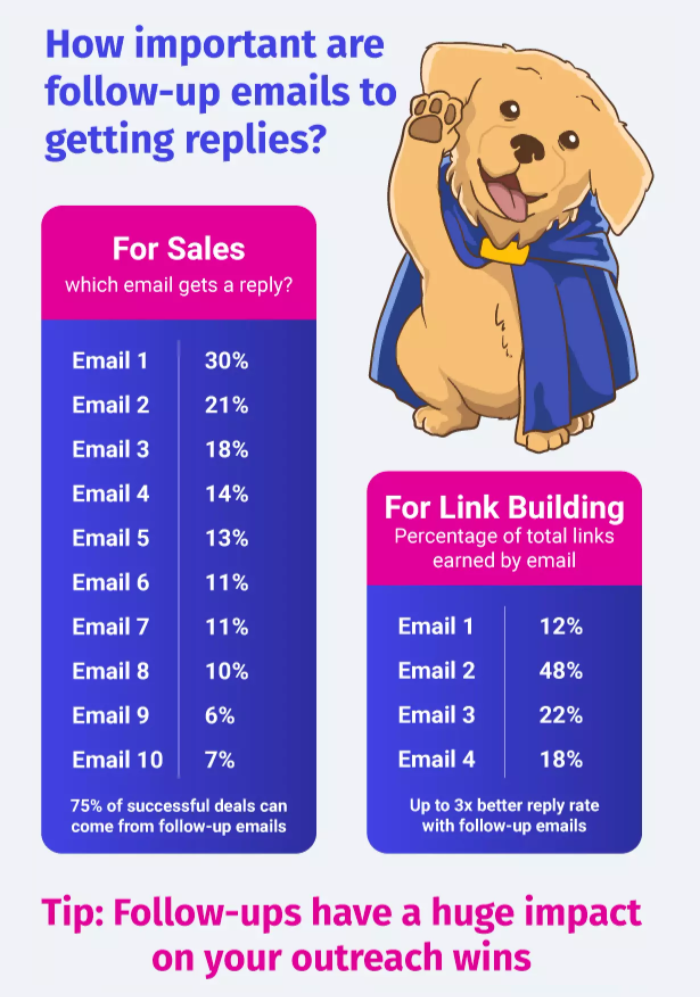
Automate Your Follow-Up Email Sequences
Using a cold outreach tool can allow you to create a sequence of emails, where your contacts will get follow-up emails a few days after the last email was sent out, provided that they have not replied to your last email.
Obviously, you don’t want to email people who have already responded to you. So, it’s important that your follow-ups only go to people who have not yet gotten back to you. The purpose of the follow-up, after all, is to get a response and get a conversation going.
How Many Follow-Up Email Sequences Should You Set Up?
As we’ve established, it’s almost sure to take more than a single cold outreach email to close a sale with the email recipient. But there is a fine line between being persistent and being a pest. Generally, you should aim to send between three and seven emails to a prospective customer depending on the type.
How Many Days To Wait Before Sending Each Follow-Up Emails
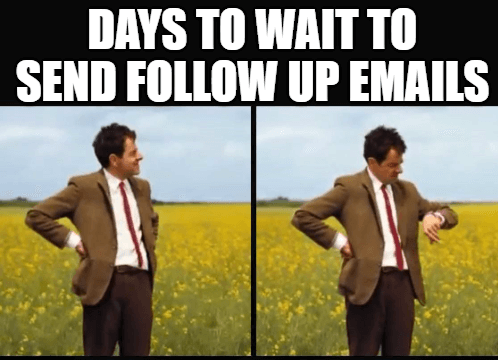
For each scenario, the number of days between emails is different. Keep in mind time zone differences and holidays when creating your sequence.
- For Sales, wait 4-6 workdays
- For Content Promotion, wait 4 workdays
- For Collaborations, wait 4 workdays
- For Guest Posting or Link Building, wait 4 workdays
Follow-Up Sequences For Sales
Depending on the type of business, 3 to 7 with increasing delays between each one. Send the following email when you’ve had no response, but if they ask you to stop, you must remove their email address from your list. If you don’t, you could find yourself in legal trouble.
- Initial email (Oct 11th)
- Follow-up after 4 days (Oct 15th)
- Follow-up after another 4 days (Oct 19th)
- Follow-up after 4 more workdays (Oct 25th)
- Additional 6 days later (Nov 1st)
- Another 5 workdays later (Nov 8th)
Follow-Up Sequences For Link Building
Here is what one particular link building strategy called the Skyscraper Technique looks like:
- Find a relevant piece of content that contains lots of backlinks
- Produce something so vastly superior they cannot refuse you
- Ask those linking to the original yet inferior content to link to yours instead
“Produce a better piece of content?” Easier said than done. But that’s how it works.
Never send more than 3 or 4 emails for link building, asking to guest post, or link exchange opportunities.
- Initial email
- Three follow-up emails
- 4 workdays gap in between each email
Follow-Up Sequences for Guest Posting
Editors are bombarded with requests for guest posts. While you’re offering free work, you likely don’t know the specific process a site uses, and a guest article requires more work for the editor than using their staff writers.
That said, guest posts can be a great way to grow your audience, so it’s worth reaching out.
- Initial email
- Two follow-up emails
- Four workdays between the follow-up emails
Follow-Up Sequences for Podcasting
Nearly 60% of consumers over the age of 12 listen to podcasts. They are a powerful medium to get your message out to a very specific audience that has an interest in whatever it is you’re selling.
- Initial email
- Two follow-up emails
- Six workday gap in between the follow-up emails
How to Write a Follow-Up Email the Right Way
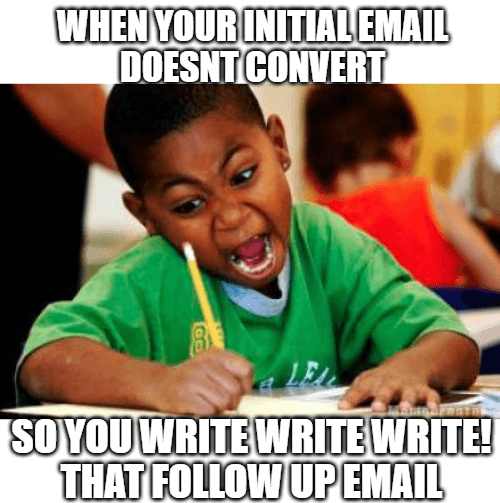
What should follow-up emails contain? The main goal of any follow-up email is to remind prospects that you’re still interested in doing business together.
Be sure to optimize the follow-up sequence that applies to your email thread as described above.
- Create Subject Line
- Add personalized Opening Line
- Establish context
- Provide genuine value
- Include a persuasive call to action
1. Subject Line
You need a killer sales email subject line in your initial cold email outreach, but you don’t need a follow-up email subject line for the subsequent emails.
Adding a subject line means you’ve created a new thread. Something you might not want to do because creating a new thread puts the reader back to square one.
They don’t know who you are and don’t have the essential information that was included in your initial message,
2. Your Opening Line
Your opening line is your hook. A good one gets the reader to keep reading. Search their LinkedIn, has there been a recent trigger event you can mention? Do you have a mutual connection you can mention? Address a problem they have that you can solve.
3. Add Context
Briefly mention a previous email or other interaction you and the reader have had in your follow-up messages. They may have had some interest in your email, but things happen, and it slipped their mind. This can be the nudge they need to respond.
4. Provide Value
There is a lot of subtle maneuvering between salesperson and potential client, some wooing, some ego-stroking. But when it comes down to brass tacks, the only thing that will turn a prospective client into a paying client is what you can do for them.
How can you provide value by making their life easier? If you don’t answer that question, they will not respond, no matter how clever your cold email campaigns may be.
5. Call to Action
A clear CTA makes it easy for the reader to take the step you want them to take. What is that step? The CTA should be geared towards that goal. Do you want them to schedule a call with you? Prominently include your Calendly link. Do you want them to sign up for a webinar? Prominently include the join link.
Follow-Up Email Templates
So, what should your follow-up email look like, taking all these things into consideration?
Next, let’s share a few templates.
In addition to these, we have more follow-up email templates in our guide to follow-up emails.
OK, here we go!
#1: An All-Purpose Follow-Up Email Template
Subject: [same subject as your first email]
Hey {First Name),
Just wanted to follow up on my last email and see what you thought.
Let me know!
Best regards,
{Your Name}
You might be thinking – “That’s it?”
Yes.
The point of a follow-up email is to be a reminder, to get the recipient’s attention and get a response from them, hoping that now is a better time for them to engage with you.
If you are using the same email subject line as your first email, your follow-up email will likely show up in the recipient’s inbox nested with the original email beneath it. So, when they open this email, they can just scroll down to see what you originally messaged about, and respond to you.
There’s no real point in rehashing the entirety of your first email in your first follow-up email.
Save that for a later email…
#2: The Recap Follow-Up Email Template
While you shouldn’t rehash the entirety of your first email in your first follow-up, at some point in your follow-up sequence, you might need to.
If it’s been a few weeks since your initial email and you have not gotten that reply yet, and you are on email 3 or 4 or 5, now might be the time to refresh their memory of what you were reaching out about.
I would use this email probably as the last or one of the last emails in the sequence before a break-up email.
Here is a recap style email template, where I reintroduce my pitch, paraphrasing it so I am not repeating myself verbatim completely, in a casual tone that tries to take the approach of “I know I sent this before, but here’s just a quick reminder to refresh your memory.” This way you’re not assuming or acting like that they have no idea who you are, even if they didn’t open any of your previous emails.
Hey {{contact_first||there}},
I hadn’t heard back from you so I wanted to reach out again.
To recap:
I know your blog has a lot of content on social media marketing.
So, I wanted to see if you’d be interested in an infographic on social media marketing trends for 2022.
Why?
- This infographic could be a good accompaniment to an existing article of yours, like this one {insert link}
- It can help drive traffic to your post
- It would also encourage more social shares since infographics are an easily digestible and sharable form of content
Are you interested?
If so, I’d be happy to share more.
Please let me know.
Have a great day,
{Your Name}
#3: Sales Follow-Up Email Template
This next template is for when you have already sent a follow-up or two to try and ping the recipient to reply, but they have not yet. Now, it’s time to try a different offer. Let’s provide something else of value, throw out a new idea, something that might be able to pique their interest and garner a response.
Hey {First Name},
Following up on the idea of working together, I wanted to share something else I thought you might be interested in.
In addition to writing blog content for SaaS businesses like yours, we also offer custom illustrations to accompany our blog posts, if that interests you as well. We provide the content, the images, and everything you need to have a blog that drives traffic and sales, and also looks great to your readers.
I’d be happy to share some samples.
Let me know what you think!
So, in this template, what the sender has done is focused on a unique selling point not mentioned in the initial email.
And this can work for any type of follow-up email, not just sales.
It can work with link-building, PR, and more.
#4: Link Building Follow-Up Email Template
Now, let’s take our “new approach” tactic and apply this to a link building pitch.
Assume that in the first email, we reached out to ask for a link to our blog post. That didn’t get us a reply, so let’s try a new offer for something like a guest post or link exchange to get their attention.
Hey there {{contact_first|| friend}},
I wanted to follow-up on this and see what you thought.
To recap, I was reaching out because I thought an article of ours about {subject} – {post_url} would dovetail nicely in an article of yours – {link_url}, providing some additional resources for your audience.
If you are interested, we might be able do something like an exchange or provide a guest post with brand new content about {topic}, fresh for your audience.
If you are not interested, it’s fine. I thought this could be a win-win for both of us.
What do you think?
Best regards,
{{user_first}}
#5: Guest Post Follow-Up Email Template
This next email template is a follow-up for a guest post pitch, where the sender is offering a guest post, but also leaving the door open to another possible type of collaboration, if the recipient is open to it.
It shows flexibility, and demonstrates that you want to work with this business in particular.
Hey {{contact_first||there}},
Since I haven’t heard back, I wanted to reach out one last time.
I assume you’re crazy busy. I completely understand and want to be respectful of that.
I’ll leave the ball in your court regarding collaboration opportunities.
If you’re interested in any things like:
- Featuring a guest post on your website that’s relevant to your audience and has some good content
- Some other collaboration between our companies
Please feel free to hit reply and let me know.
#6: Podcast Pitch Follow-Up Email Template
Next, let’s take our “new approach” follow-up email tactic and apply this to a podcast guest pitch.
Assume that in the first email, we reached out to ask to be a guest on a podcast. No reply from that, so let’s try something else.
Hello {{contact_first||again}},
Just wanted to follow up and see if you are looking for new podcast guests.
If you would be able to feature me, I would be happy to promote your podcast to my audience of 10,000 email subscribers as well!
Thanks,
{Your Name}
See what I did there? I threw in a sweetener to my pitch.
#7: Press Coverage Follow-Up Email Template
If you are looking for blogs or journalists to write about your business, you will need to follow up with them.
Journalists get a lot of pitches constantly. It’s part of the job.
So, we need to remind them who you are, why you are relevant to their audience and worthy of coverage.
Hey {First Name},
Just wanted to follow up with you on this. To recap in case you missed my last message:
I came across your post of different widgets, {{link_url}} , and love the resources you share.
I wanted to reach out because my company makes an amazing {What You Do} for {Journalist’s Target Audience} that I thought would be a perfect addition for your audience.
{Insert line about what your product does, how it helps the journalist’s target audience and why they should care}.
If you are interested in learning more, or mentioning it in an article, I’d be happy to share anything you need, like a free account and personal walkthrough!
Let me know what you think.
All the best,
{Your Name}
#8: The Right Person Follow-Up Email Template
If you haven’t gotten a reply, maybe it’s because the person you are reaching out to simply isn’t the right person at the company who can help you. Oops.
In this email template, we are also looking for clarification, that, if this person is not the right person, do they know someone else at the company we should speak with?
But, also, if the recipient is the right person to contact, we are giving them an “out” – an opportunity to reply without feeling any guilt for not having replied to our previous emails.
Hey {{contact_first||there}},
I hadn’t heard back so I wanted to try reaching out one last time. Are you the right person to speak with? If not, is there someone else I should get in touch with at {{contact_company||your company}}?
#9: Bonus: The Break-Up Email Template
It’s not you; it’s them. Or maybe it is you. Who knows? In either case, sometimes it becomes clear you’re not going to get a response. But hope springs eternal, so sending a well-composed break-up email can snatch victory from the jaws of defeat!
Here is a sample template:
Hey {First Name},
I was going through our files and am closing things out for the month.
Since I had not heard back from you after a few emails, do I have permission to close your file?
The point of the break-up email is a last-ditch attempt to get a conversation going and create some urgency. Close my file? That sounds so permanent. I don’t want to miss out on this, so I better respond.
Best Practices for Follow-Up Emails
These steps are super secret tips for increasing your response rates for your cold email follow-ups.
1. Keep it Short
The first tip! Get to the point and fast! Busy professionals don’t have all day. Your follow-up emails should be shorter than your initial email.
2. Be Honest
Whatever industry you’re in, you have scammers coming at you from all sides. Make sure nothing about you, your company, your product or service, or your email campaign makes you look like a scammer too. Always be honest with your potential clients.
3. Be Consistent
Optimize the follow-up sequence we’ve outlined, and don’t stop until you get a response, you have sent the required number of follow-ups and send the final break-up email, or you’re asked to stop. Persistence is the key to closing the clients.
4. Visually Personalize
Personalization should be a part of your email marketing strategy. But don’t stop at personalizing just the email body. Visual personalization is a new tactic being implemented by tons of SDRs and marketers.
The other forms of personalization like images, gifs, and videos is working quite well. People can process visual information more quickly than written. A picture is worth a thousand words, you know!
Postaga heavily practices media personalization. We utilize memes, my cat, my face, gif everything to catch prospects’ attention. And it works like a charm!
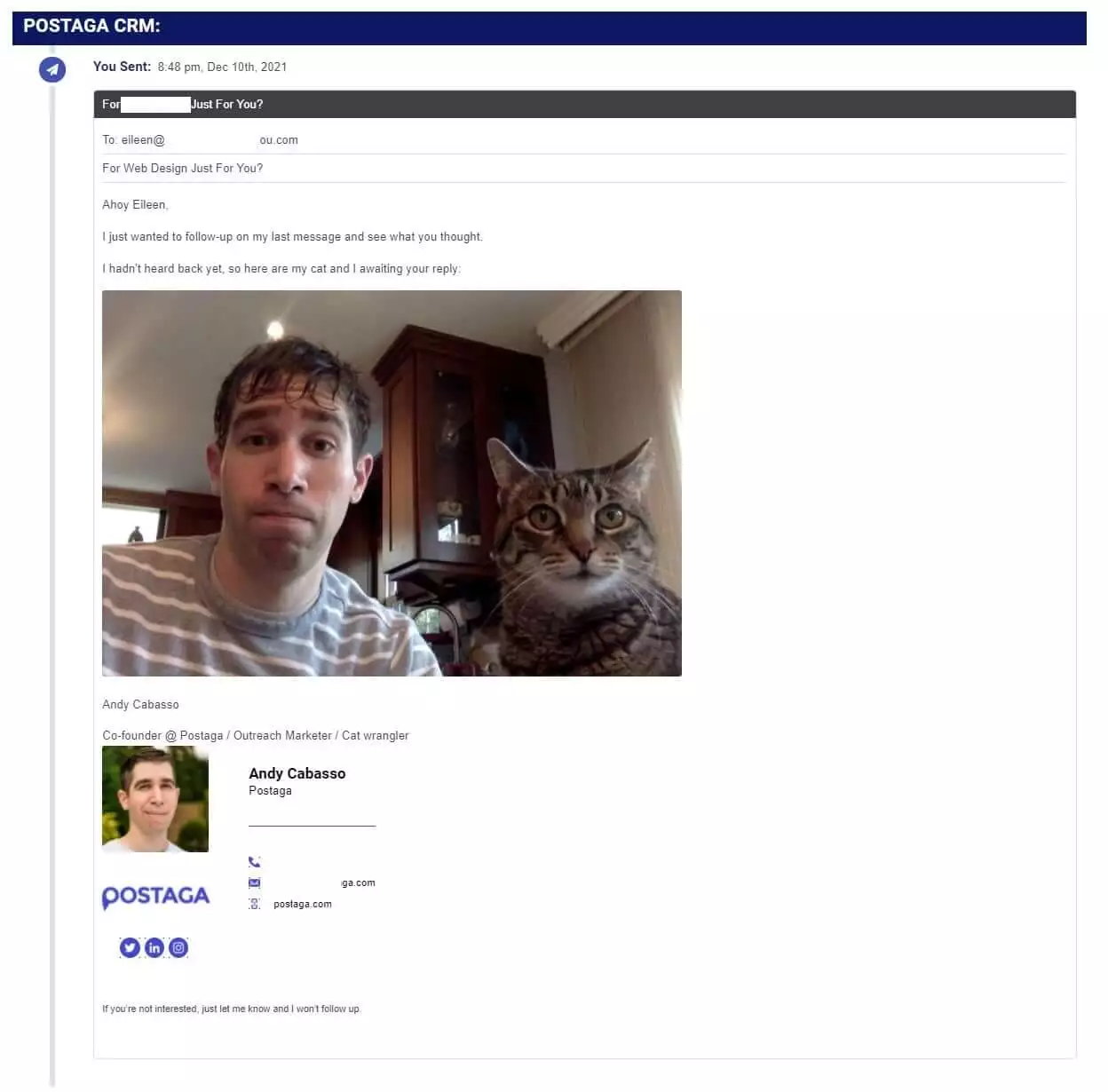
5. Keep it Simple
Don’t ask too much of your prospects. Not too much commitment, no hard decisions, one clear and simple CTA. Make things as easy for them as you can, make the entire process seamless.
6. Diversify Your Channels
A multi-pronged attack! Don’t confine your outreach efforts to cold emails. Companies that used an omnichannel approach to customer engagement saw a 9.5% increase in annual revenue. If you want similar results, spend more time engaging with potential customers via social media. Effective strategies have more than one front! Even though it’s not a new tactic but a lot of marketers don’t consider doing it since it requires more time.
7. Be Mindful of Time Zones
Seems like the best follow-up tip was saved for the last!
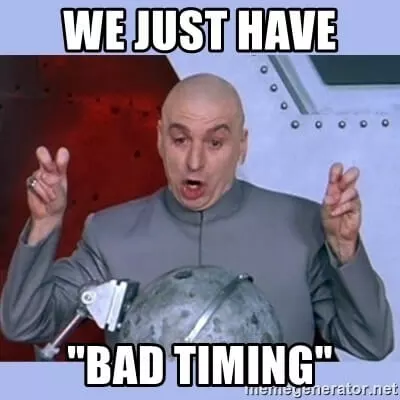
If you deal with clients across the globe, being aware of their time zones helps optimize the follow-up outreach sequence. It’s challenging but possible if you do lead list segmentation based on their geolocation, so your email reaches them at the optimal time of day.
A follow-up email that hits their inbox at 2 am local time will get lost under the pile of emails sent during their business hours. Be mindful of local holidays too, when someone in another country may not be in the office.
8. Know When to Stop
There is a point when being persistent crosses the bounds of the law. In order to be compliant with SPAM laws, you may not send another email after someone has unsubscribed or asks you to stop. If you continue, you can be sued. And since everyone hates Spammers, the jury will convict you in like one second flat!
Wrapping It All Up
The statistics don’t lie. Follow-up emails increase conversions. Creating a tight follow-up strategy will decrease the workload on your sales teams and increase your revenue. What more could you ask? If you want to learn more do give your in-depth follow email guide a read.
Free 14-Day Trial
Start building relationships now with your fully-featured 14-day trial!
How We Compare
Terms | Done-For-You Terms | Privacy | Write For Us | Press
© 2025 Postaga. All Rights Reserved. Made with 
